Drinking Water Protection
- Drinking Water Protection Home
- About Us
- A-Z Index of Contaminants in Water
- Community Public Water Supply
- Drinking Water Grants and Loans
- Drinking Water Institute
- Drinking Water in Schools and Child Cares
- Drinking Water Revolving Fund
- Laws and Rules
- Noncommunity Public Water Supply
- Source Water Protection
- Water Operator and Certification Training
- Drinking Water Protection Contacts
Related Topics
- Annual Reports
- Drinking Water Risk Communication Toolkit
- Drinking Water Protection External Resources
- Fact Sheets
- Forms
- Invisible Heroes Videos: Minnesota's Drinking Water Providers
- Noncom Notes Newsletter
- Sample Collection Procedures (videos, pictures, written instructions)
- Waterline Newsletter
Related Sites
- 10 States Standards
- Clean Water Fund
- Health Risk Assessment – Guidance Values and Standards for Water
- Minnesota Well Index
- Water and Health
- Wells and Borings
Environmental Health Division
Anoka Water Keeps Up with City’s Growth
From the Summer 2023 Waterline
Quarterly Newsletter of the Minnesota Department of Health Public Water Supply Unit, Waterline
A complete list of feature stories can be found on the Waterline webpage.
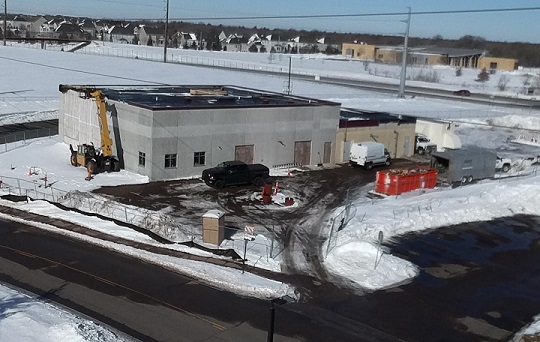
An aerial photo shows the increased height and footprint of the addition to the Anoka water treatment plant. Below is an interior look at the addition.
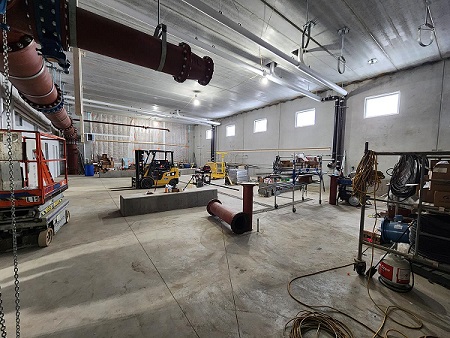
For decades Anoka was a free-standing city about 25 miles northwest of Minneapolis. The confluence of the Rum and Mississippi rivers brought pine logs, sawmills, and people to create a robust lumber industry, leading to the incorporation of Anoka in 1878.
Now part of the Twin Cities metropolitan area—partly by its own growth but more by the development of swelling suburbs between the cities—Anoka has a population of just over 17,000. It is known for tornadoes (the nickname of the city’s high school) and pumpkins (as the self-proclaimed Halloween capital of the world) as well as being the hometown of luminaries ranging from Briana Scurry to Garrison Keillor.
Anoka retains an independent nature distinct from its neighboring communities. “The unique thing is, it’s like being in a small town,” says Mark Anderson, Anoka’s director of public services. “Everybody knows everybody, but it’s still connected to the metro.”
Independent and self-sufficient, Anoka has had a public water system for more than a century, first using the Rum River as a source. A disease outbreak prompted the city to drill two wells and construct a building to house both water and electric operations. Remnants of the structure and wells still exist although Anoka has moved on to have four water treatment facilities to serve six wells. Ranging in depth from 274 to 657 feet and drawing from the Mt. Simon and Mt. Simon-Hinckley aquifers, the wells are in close proximity to the plants, which are spread out around the city.
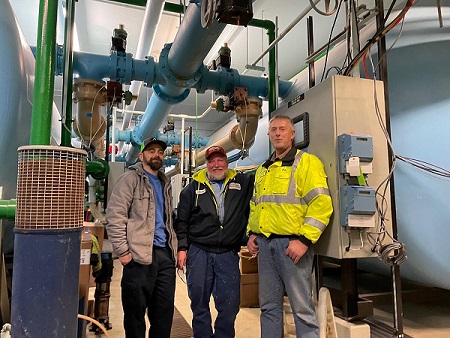
Marcus Mihelich, Donny Roseth, and Pete Klingenberg in front of the filters in the existing plant. Little space exists above the filters in the current plant.
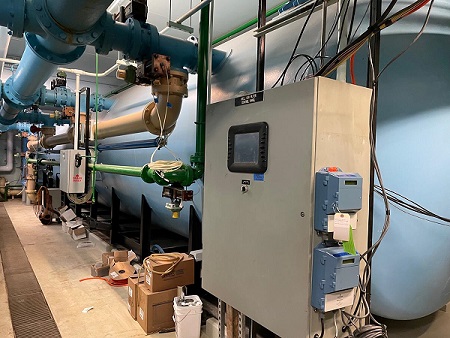
All of the water plants contain pressure filters, consisting of silica and anthracite, to remove iron and manganese as well as radium. Three of the wells have radium issues, and the city operated under a compliance agreement with the Minnesota Department of Health for a few years.
The radium in the water was reduced through co-precipitation with the addition of hydrous manganese oxide (HMO). “Radium is actually really easy to remove,” said John Thom of SEH, Inc., which has worked with the city on the issue. “Raise the manganese level in the effluent in the wells to the point that the radium will attach to the manganese. Then take that out.”
Blending is also used as a treatment technique, including at wells 6 and 8, which are within or near a treatment plant that is being expanded on the north side of the city, adjacent to Anoka High School and the municipal ice arena. In 2022, construction began for an expansion of this plant.
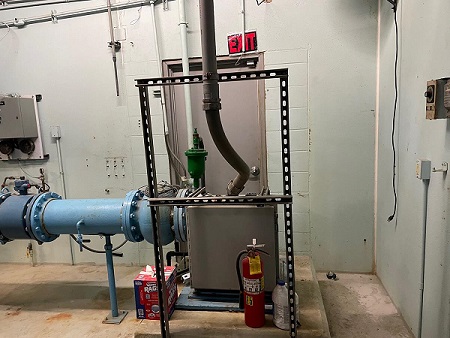
Well 5 inside the existing plant.
The project will entail two more pressure filters, doubling the plant’s capacity, as well as a laboratory, chemical-feed room, office, and a restroom (precluding the need for employees to make frequent visits to a nearby Casey’s store). In addition, the utility is switching from gas to liquid chlorine. “With the high school next door, it makes sense for safety reasons,” said water superintendent Pete Klingenberg.
While the number of filters is doubling, the structure size will be many times that. The footprint of the expansion is much larger than that of the existing plant, and the ceiling height will be greater. “That will make for easier maintenance,” said Donny Roseth, the facility’s main operator. “It’s pretty tight now. Not much extra room.”
“They should be commended for being pro-active and planning for the future,” said Minnesota Department of Health district engineer Brian Noma.
Financed through bonding, the $6.9 million expansion will feature other changes, including a change from pneumatic to electric valves, pumps, and a change from the effluent traveling down and out, under the building. “Now it will go up and out,” said Thom. “which makes it easier to tie in with the new filters.”
The new filters were installed in the spring of 2023 with completion expected by the end of the year.
“We’re going to increase our ability to treat water and meet all the growth that the city will see in the next 10 years,” said Anderson. “This will be our main plant. We still have a number of other wells, but this will do our heavy lifting.”
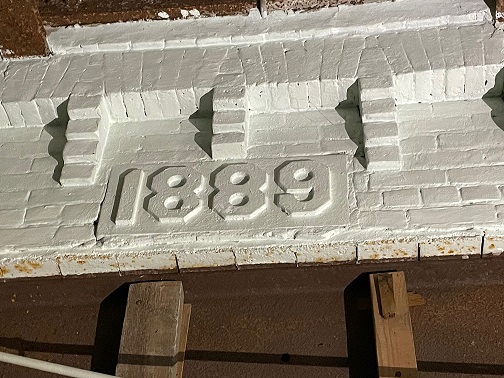
The original water treatment facility, opened in 1889, is now idle on the banks of the Rum River.
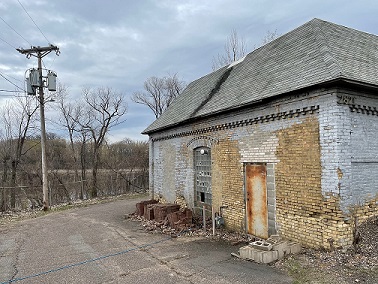
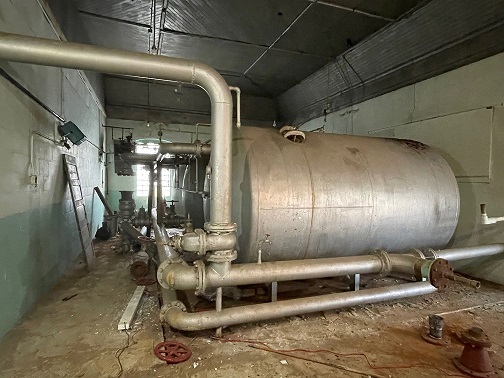
Pressure filters and the original well inside the now-idle plant.
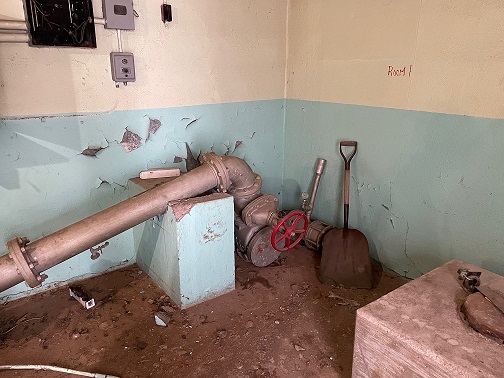
Go to > top.